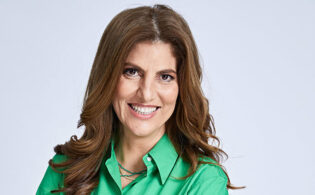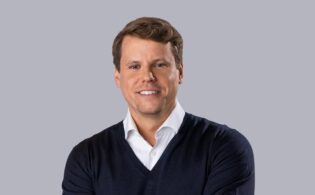The downturn in Europe’s advertising market has taken a toll on the region’s entire media ecosystem, but for legacy broadcasting groups still contending with shifts in viewing consumption trends, 2023 was an especially challenging year. While macroeconomic woes remain in Europe, UEFA EURO 2024, the Summer Olympics and upbeat forecasts for ad-supported streaming revenues are helping to propel hopes for a slight recovery this year.
On the heels of a better-than-expected fourth quarter in 2023, ProSiebenSat.1 Media is targeting a slight gain in 2024 revenues to €3.95 billion ($4.3 billion). Joyn, the streaming service now fully owned by ProSiebenSat.1 since it bought out Warner Bros. Discovery’s interest in 2022, is at the heart of the company’s strategy for mitigating endemic declines in linear advertising. The platform, which offers AVOD and SVOD tiers, is part of ProSiebenSat.1’s entertainment segment, encompassing all of its content production, broadcast and distribution assets. Seven.One Entertainment Group caters to audiences across Germany, Austria and Switzerland with such market-leading channel brands as ProSieben, SAT.1, sixx and Puls 8, plus a range of digital services anchored by Joyn. Seven.One Studios, meanwhile, houses production companies across Europe as well as Red Arrow Studios International, home to such megaformat brands as Married at First Sight and critically acclaimed returning dramas like Vienna Blood. ProSiebenSat.1 also operates an investment arm and owns ParshipMeet Group, which runs a range of online dating and social networking sites.
Over his long career in international television, Bert Habets has racked up an array of experience running European media companies. Before joining ProSiebenSat.1 Media in November 2022 as group CEO, Habets spent time at Greece’s Antenna Group and almost two decades at RTL Group, most recently as CEO. In this wide-ranging conversation, Habets talks to World Screen about restructuring ProSiebenSat.1 to weather short- and long-term shifts in the media economy, rationalizing international content spend and betting big on local entertainment that will resonate with audiences and advertisers alike.
WS: You took on the CEO role at ProSiebenSat.1 in what can best be described as a challenging time for the media business. What strategy needed to be put in place to get the company through this period of disruption?
HABETS: We put entertainment at the center of our activities. Our ambition is to become the number one entertainment player in the German-speaking region. Streaming is the key area where we want to grow and invest. That is why we put our streaming platform, Joyn, at the center of our entertainment business. At the same time, TV is still a $3.8 billion ad market in the free-to-air domain in the German-speaking region. So, while knowing that the future is in streaming video, there is a lot of potential for improvement in repositioning and rebuilding the channels, which we are doing in parallel. Fortunately, we have seen growth in 2023 since we took ownership in November 2022 of the streaming platform. That’s an immediate effect of our new strategic direction.
WS: You also announced a significant management restructure of Seven.One Entertainment Group in October 2023. Tell us about that move and why it was important.
HABETS: Our digital-first strategy allowed a lot of leaders to take on new roles in the company. Henrik Pabst is the chief content officer, with heads for each individual channel. Channel heads live the day-to-day DNA of their grids and the audiences they want to reach. We have a digital head, Katharina Frömsdorf, as chief platforms and growth officer, and an external hire for our new head of sales, Carsten Schwecke. All of them are shaping the future of the entertainment organization. This new, simplified structure makes people work much closer together—and allows for an overall focus on our channels and Joyn. We made the Joyn content decisions part of our overall program budget. We’re selecting content that works on both linear and Joyn. We all have the same KPI metrics—the day-to-day metrics of generating ratings and, more specifically, building and scaling Joyn.
WS: The company reported an improved Q4 2023. Give us a sense of your 2024 financial outlook.
HABETS: There are some initial good signs—I am cautious but positive. If you look at last year’s performance, as of Q3 and Q4, the decline in the ad market has lost momentum. In the fourth quarter, we even saw slight growth in the high season around Christmas. That, combined with the cost-reduction exercise that we did with the restructuring, started to materialize in Q3 and Q4. This all led to us outperforming our numbers. Especially now, with our latest uptick in the Q4 results, that is all positive news. So, while knowing that we’re starting from a low basis, we see some positive growth in the first quarter of the year. Digital and smart advertising is growing significantly faster than the TV advertising market. All in all, I think we’re off to a decent first quarter of the year.
WS: Tell us about your newly announced advertising relationship with RTL Deutschland. Why do you think collaborations like this one are important for European media groups as they take on the dominance of the global tech giants?
HABETS: This has been a big announcement in the German-speaking region. RTL Deutschland and ProSiebenSat.1 are forming a strategic alliance on the rollout of a shared ad tech stack. We are combining our assets and have come to a setup where we use the best of each other to build a compelling market offering. It’s suitable for linear, addressable and programmatic TV and our streaming video offers. That’s the first step. It’s also suited for a broader rollout, and we aim to talk to other European players. We called it “ad tech made in Europe.” It truly has the potential to play a vital role in how we can cater to our advertising clients across the German-speaking region, potentially even on a pan-European basis.
WS: Talk to us about the viewer-first strategy you’ve been putting in place and the renewed emphasis on local content.
HABETS: We made some important announcements in December with an increase in our investments into local content by €80 million ($87 million). We will thus invest over €1 billion ($1.1 billion) in content this year to strengthen our channel grids and scale Joyn further. We have built back into local fiction, a category we left for our channels a few years ago. We introduced a successful daily fiction series on SAT.1, Die Landarztpraxis. It’s about a doctor’s practice in the mountains. It’s been catering to an older audience on SAT.1 but has also been very popular on Joyn, which caters to younger viewers. It was launched in the fourth quarter and was very high in our rankings of the overall content on Joyn for 2023. That is what we mean when we say we have a hybrid content strategy, where we want all of our content investments to work on both sides. We launched Big Brother, and it was a big success. For Big Brother, we have a live stream on Joyn for 100 days. SAT.1 is airing it on the channel once a week, and afterward it’s daily on Joyn, in addition to the 24-hour live stream. It could also be an interesting concept for other reality formats to experiment with. We’re actively trying to claim that category for Joyn. Outside of that, we are substantially increasing the originals budget for Joyn with more series coming in. We’re actively discussing cooperation and partnership options to enhance Joyn’s content offering further.
WS: How are you positioning the Joyn subscription tier, Joyn Plus+? And how do you funnel viewers from the linear channels to streaming and back?
HABETS: We have preview options for many of the big shows upcoming on TV. With Big Brother, you have this exclusive live stream on Joyn Plus+. With our daily fiction series Die Landarztpraxis, you can watch it one week in advance on Joyn. But our focus is on positioning Joyn as the freely accessible German-language streaming video platform. We also aggregate a lot of linear channels on the platform. We also provide a lot of FAST channels that we curate ourselves. It’s a vibrant offering that is freely accessible in the German-speaking region. We have significant growth of 18-plus percent in terms of monthly video users throughout the past year. We’re on a fast growth track with the platform. Once we have built a sizable scale through organic growth and partnerships, we will focus more on the paid VOD product.
WS: What role do Seven.One Studios and Red Arrow Studios International (RASI) play for the organization as you look to both expand your local content options and monetize IP internationally?
HABETS: Seven.One Studios has been a growth engine for our grids and Joyn. We can actively use all the creativity that is bundled in our companies to develop new content ideas. Seven.One Studios also produces a lot for third parties, including ARD, ZDF, RTL, Netflix and Prime Video. We have quite a large client base beyond our internal productions. The other labels outside of the German-speaking region, in Denmark and the U.K., have also successfully developed international IP for us, such as Married at First Sight and Stranded on Honeymoon Island. We’re developing ideas in the German-speaking region that could also travel internationally. I’m very happy with this rich portfolio of production companies, which we will continue to develop through new talent deals. RASI is an integral part as well. They’re selling our IP. Beat the Channel was recently sold to Spain. It’s a local format, strongly driven by local hosts, and now it will be in the Spanish market. RASI is doing a great job!
WS: You’ve spent many years in leadership. What’s your approach to managing an organization through a crisis? We all see the headlines about layoffs and the challenges of the market now. What’s your message to your teams about navigating through this down cycle?
HABETS: We spend a lot of time defining the company’s vision and strategy going forward. We need to adjust and adapt to the difficult market circumstances. We’ve actively worked on it in constructive dialogue with the leadership team, in group sessions, with workers’ councils and other stakeholders. To some extent, we’ve taken the challenging environment as an opportunity to reshape the whole organizational setup. At the end of the day, it is a transformation journey that continues with rigor, where openness for change, taking risks and adaptability are crucial for success. We see more and more colleagues becoming excited to join us in this challenge. Growing much faster in the digital domain is the way to go, and it confirms to the colleagues that we are on the right [path]. At the same time, we’re optimizing the linear channel portfolio we have run so successfully for so many years and building this into one team and one organization. Success breeds success, and that is the momentum we need to cater to and nurture to ensure the company stays agile, strong and healthy.



